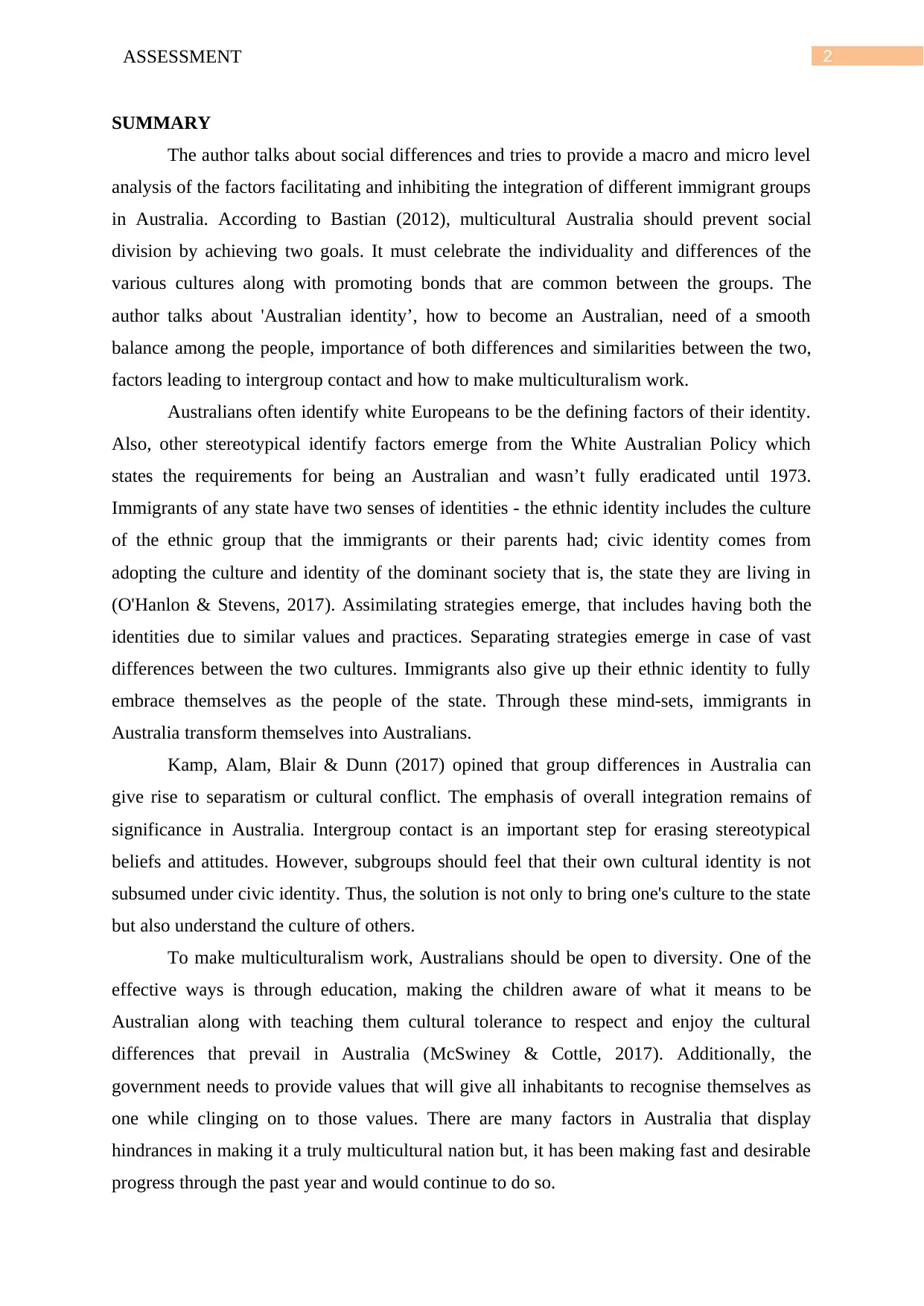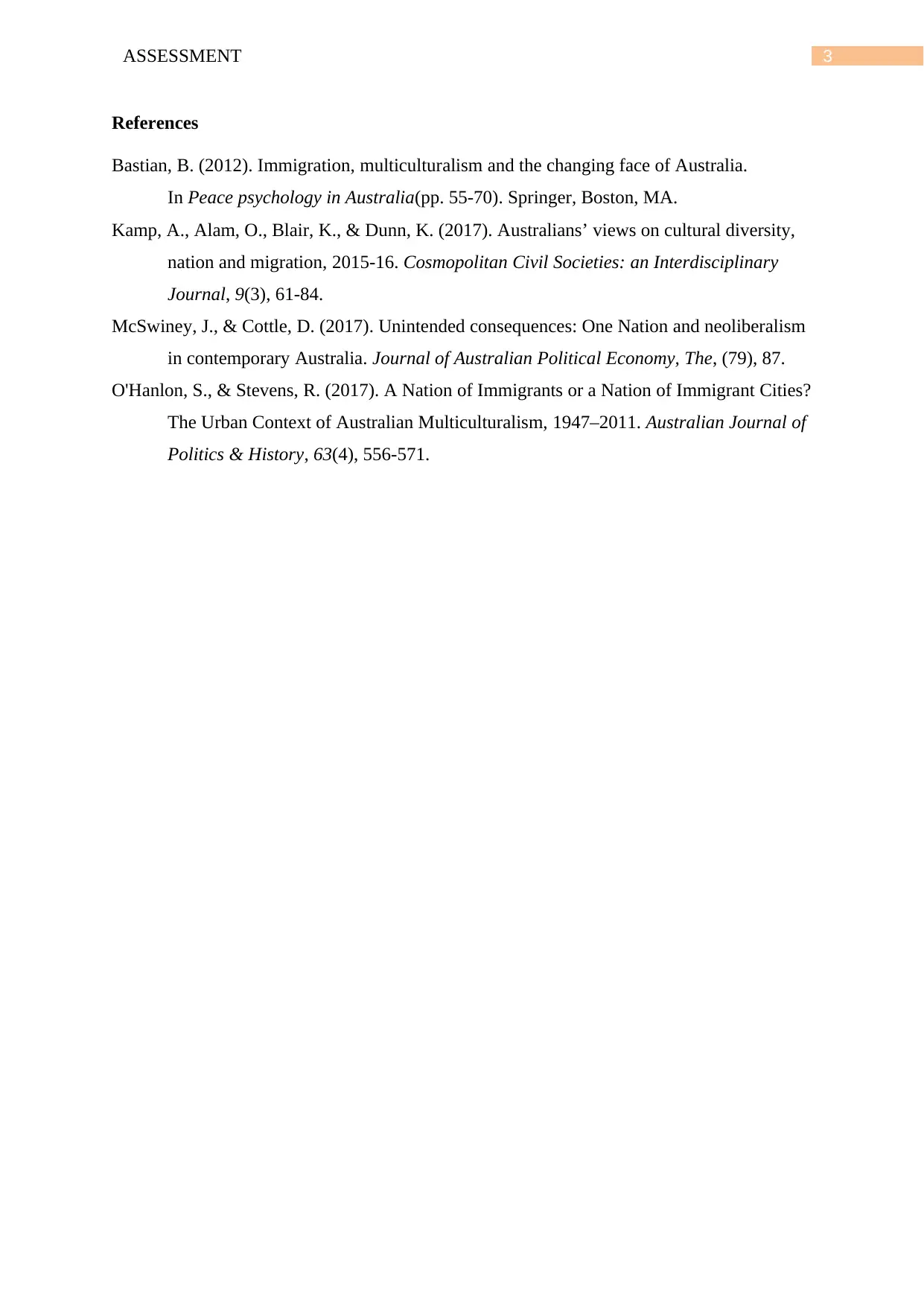Sociological Analysis: Multiculturalism and Immigration in Australia
VerifiedAdded on 2023/04/17
|3
|544
|420
Essay
AI Summary
This essay analyzes the multifaceted nature of multiculturalism in Australia, focusing on the factors that influence the integration of diverse immigrant groups. It explores the concept of 'Australian identity' and the historical context of immigration policies, including the White Australian Policy. The essay examines the dual identities (ethnic and civic) of immigrants and the strategies they employ to assimilate into Australian society. It also discusses the significance of intergroup contact in breaking down stereotypes and fostering a sense of belonging. The author emphasizes the importance of cultural tolerance and education in promoting a truly multicultural society, while acknowledging the hindrances faced in achieving this goal. The essay draws upon various research sources to support its arguments, highlighting the ongoing progress and challenges in creating a cohesive multicultural nation.
1 out of 3








![[object Object]](/_next/static/media/star-bottom.7253800d.svg)